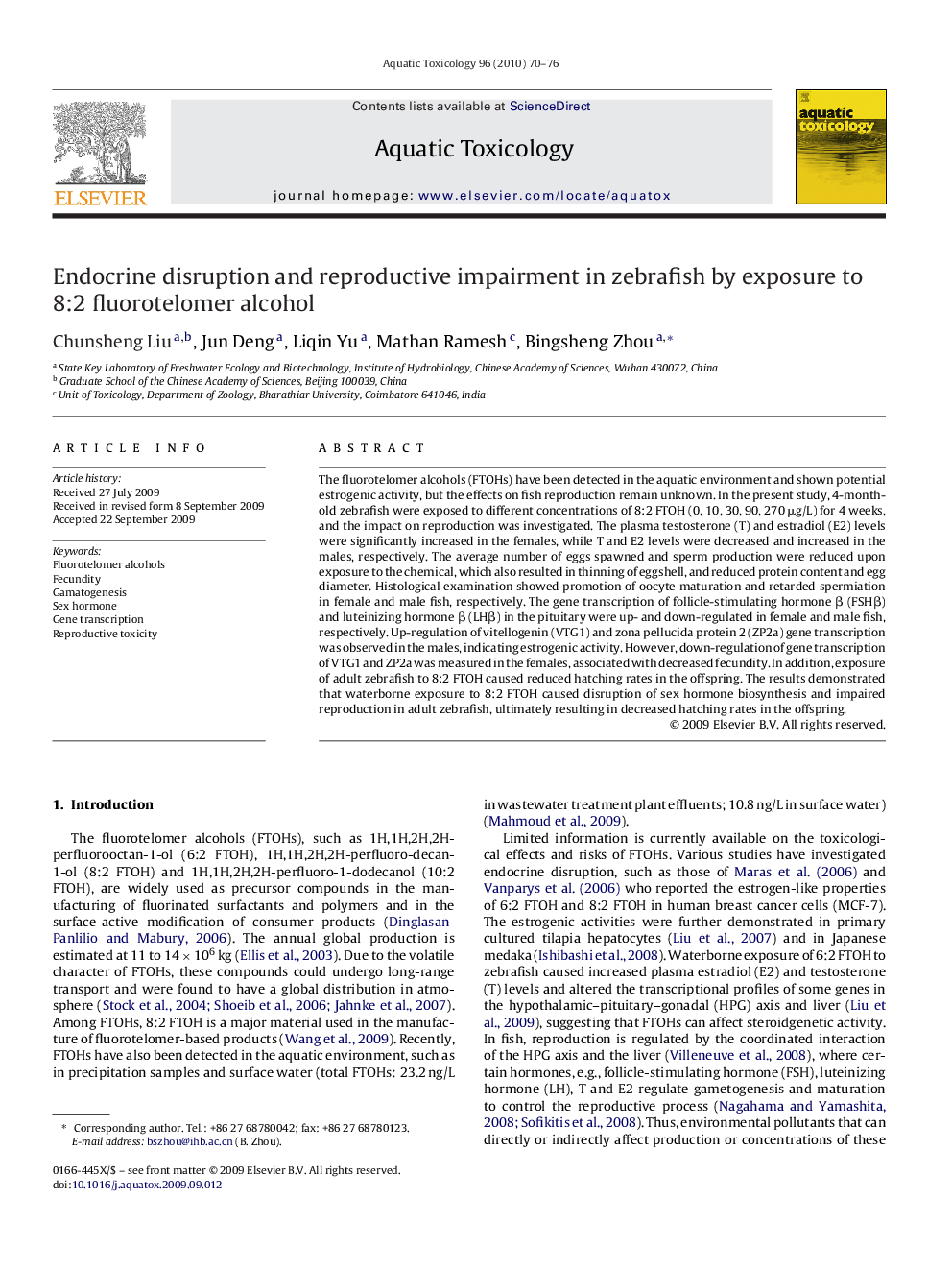| Article ID | Journal | Published Year | Pages | File Type |
|---|---|---|---|---|
| 4530320 | Aquatic Toxicology | 2010 | 7 Pages |
The fluorotelomer alcohols (FTOHs) have been detected in the aquatic environment and shown potential estrogenic activity, but the effects on fish reproduction remain unknown. In the present study, 4-month-old zebrafish were exposed to different concentrations of 8:2 FTOH (0, 10, 30, 90, 270 μg/L) for 4 weeks, and the impact on reproduction was investigated. The plasma testosterone (T) and estradiol (E2) levels were significantly increased in the females, while T and E2 levels were decreased and increased in the males, respectively. The average number of eggs spawned and sperm production were reduced upon exposure to the chemical, which also resulted in thinning of eggshell, and reduced protein content and egg diameter. Histological examination showed promotion of oocyte maturation and retarded spermiation in female and male fish, respectively. The gene transcription of follicle-stimulating hormone β (FSHβ) and luteinizing hormone β (LHβ) in the pituitary were up- and down-regulated in female and male fish, respectively. Up-regulation of vitellogenin (VTG1) and zona pellucida protein 2 (ZP2a) gene transcription was observed in the males, indicating estrogenic activity. However, down-regulation of gene transcription of VTG1 and ZP2a was measured in the females, associated with decreased fecundity. In addition, exposure of adult zebrafish to 8:2 FTOH caused reduced hatching rates in the offspring. The results demonstrated that waterborne exposure to 8:2 FTOH caused disruption of sex hormone biosynthesis and impaired reproduction in adult zebrafish, ultimately resulting in decreased hatching rates in the offspring.
